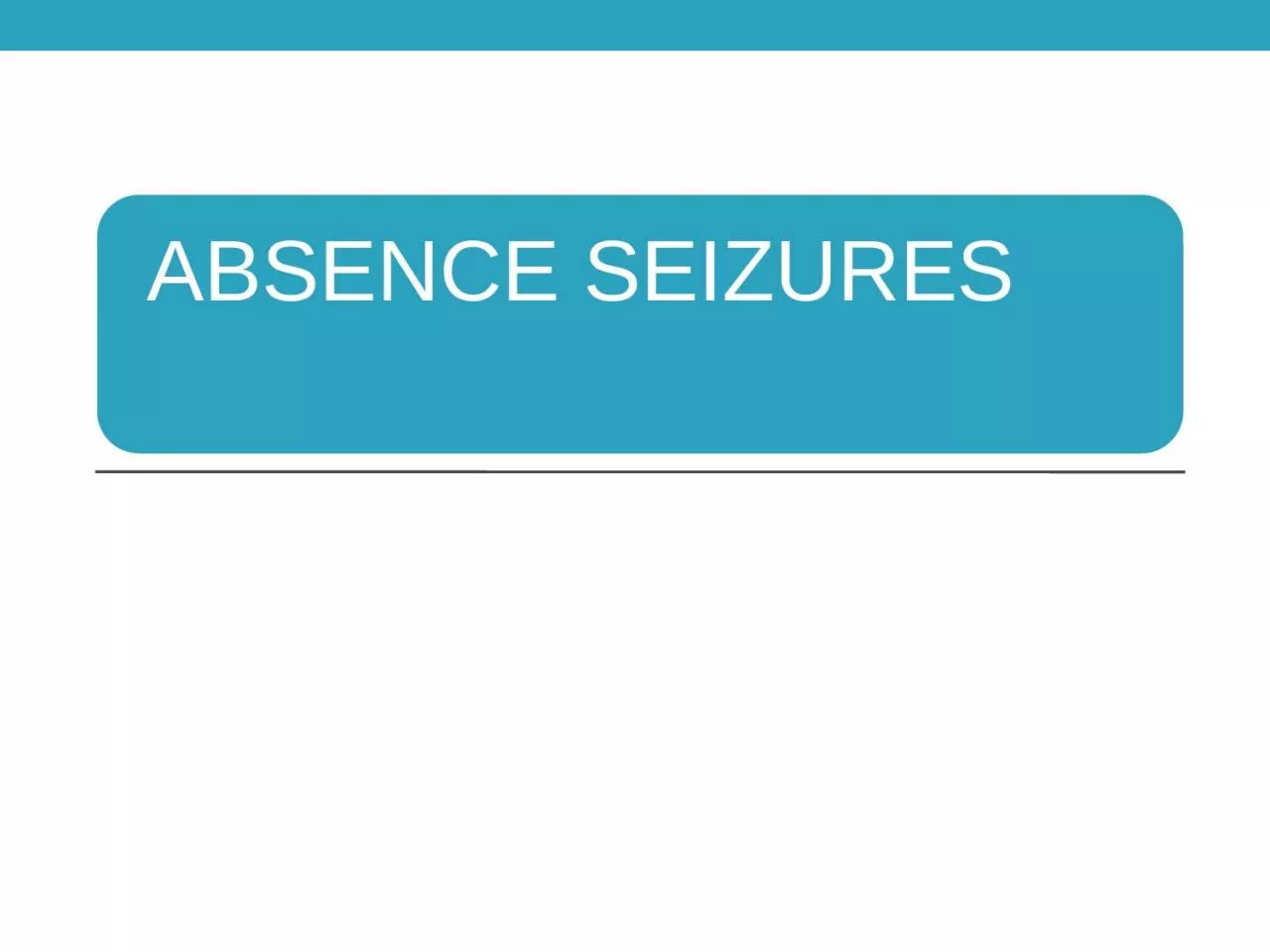

owing to their brevity overlooked by parents for many months even though they can occur up to 100s of times per day How to differentiate from complex partial seizures Unlike complex partial seizures they absence ID: 999258
Download Presentation The PPT/PDF document "age of onset :Typical absence seizures u..." is the property of its rightful owner. Permission is granted to download and print the materials on this web site for personal, non-commercial use only, and to display it on your personal computer provided you do not modify the materials and that you retain all copyright notices contained in the materials. By downloading content from our website, you accept the terms of this agreement.
1.
2.
3. age of onset :Typical absence seizures usually start at 5-8 yrs. of age. owing to their brevity, overlooked by parents for many months even though they can occur up to 100s of times per day
4. How to differentiate from complex partial seizures ?Unlike complex partial seizures they( absence):Do not have an aura.Usually last for only a few seconds.Are accompanied by eye lid flutter or upward rolling of the eyes but typically not by the usually more florid automatisms of complex partial seizures
5. How to differentiate from complex partial seizures ? 4. Absence seizures do not have a postictal period 5. Are characterized by immediate resumption of what the patient was doing before the seizure.6. Hyperventilation for 3-5 min can precipitate the seizures and the accompanying 3 hz spike–and–slow-wave discharges
6. Example of 3Hz generalized spike-and-wave seen on the ictal EEG
7. Treatment:Absence seizures are most often initially treated with ETHOSUXIMIDE. Alternative drugs of first choice are LAMOTRIGINE AND VALPROATE.Other medications that could be used for absence seizures include ACETAZOLAMIDE, ZONISAMIDE, OR CLONAZEPAM.
8. West syndrome
9. starts between the ages of 2 and 12 mo and consists of a triad of: Infantile epileptic spasms that usually occur in clusters (particularly in drowsiness or upon arousal) Developmental regressionTypical EEG picture called hypsarrhythmia (high voltage, slow, chaotic background with multifocal spikes).The spasms are often overlooked by parents and physicians, being mistaken for startles caused by colic or for other benign paroxysmal syndromes
10.
11.
12. The underlying etiology of the spasms dictates theprognosis. More than 200 different etiologies have been identified, including :Tuberous sclerosisCortical malformations (lissencephaly), Genetic syndromes (trisomy 21),Acquired brain injury (stroke, perinatal HIE)Metabolic disorders (phenylketonuria).
13. Infants for whom an etiology is determined are classified as having symptomatic infantile spasms and are at very high risk for long-term neurodevelopmental difficulties. The etiology is not determined (cryptogenic spasms ) for a small subset of children. These patients with have a somewhat better long-term prognosis. West syndrome, especially in cryptogenic cases is a medical emergency because diagnosis delayed for 3 wk or longer can affect long-term prognosis
14. Tuberos sclerosis
15. RxIt is best treated with hormonal therapy in the form of either ACTH injections or oral steroidsVigabatrin can be used as a first-line agent for infantile spasms in patients with tuberous sclerosis and is the second-line choice if hormonal therapy was unsuccessful. Ketogenic diet is probably the third-line therapy.Subsequent alternative treatment options for spasms include valproate, benzodiazepines ,topiramate, lamotrigine, zonisamide, pyridoxine, and IVIG.